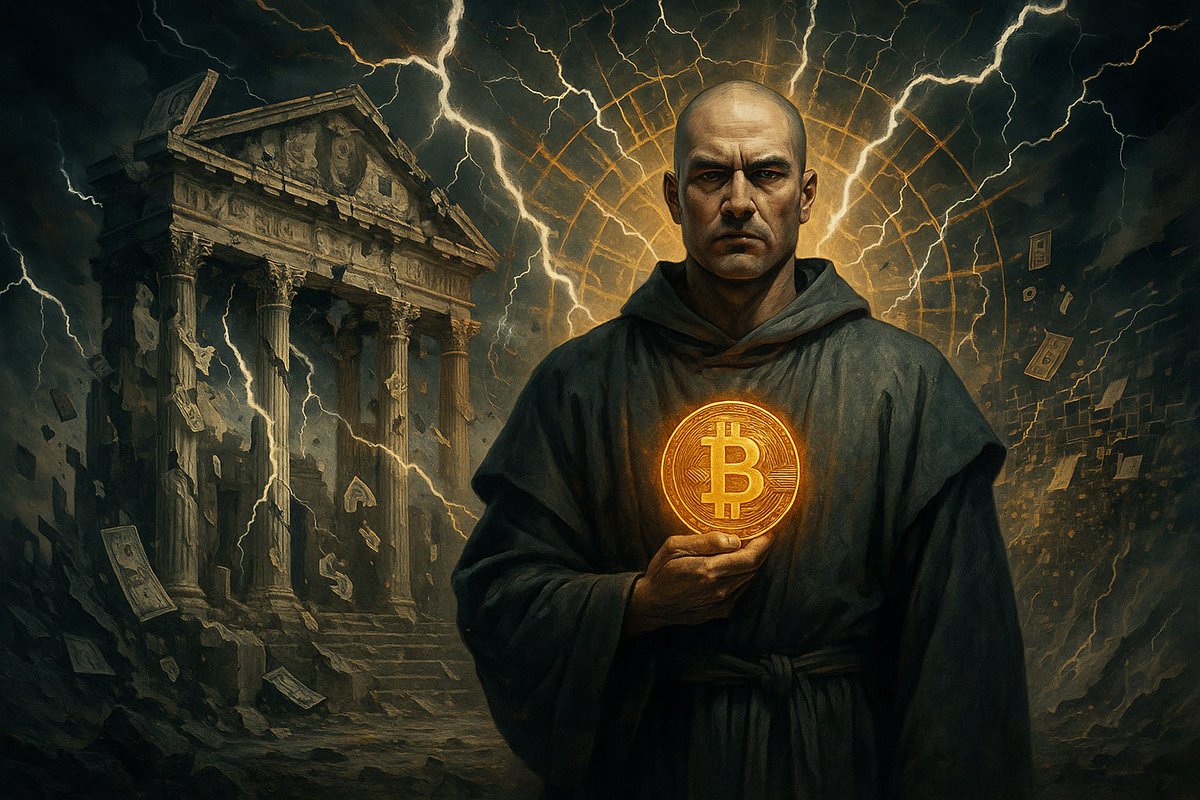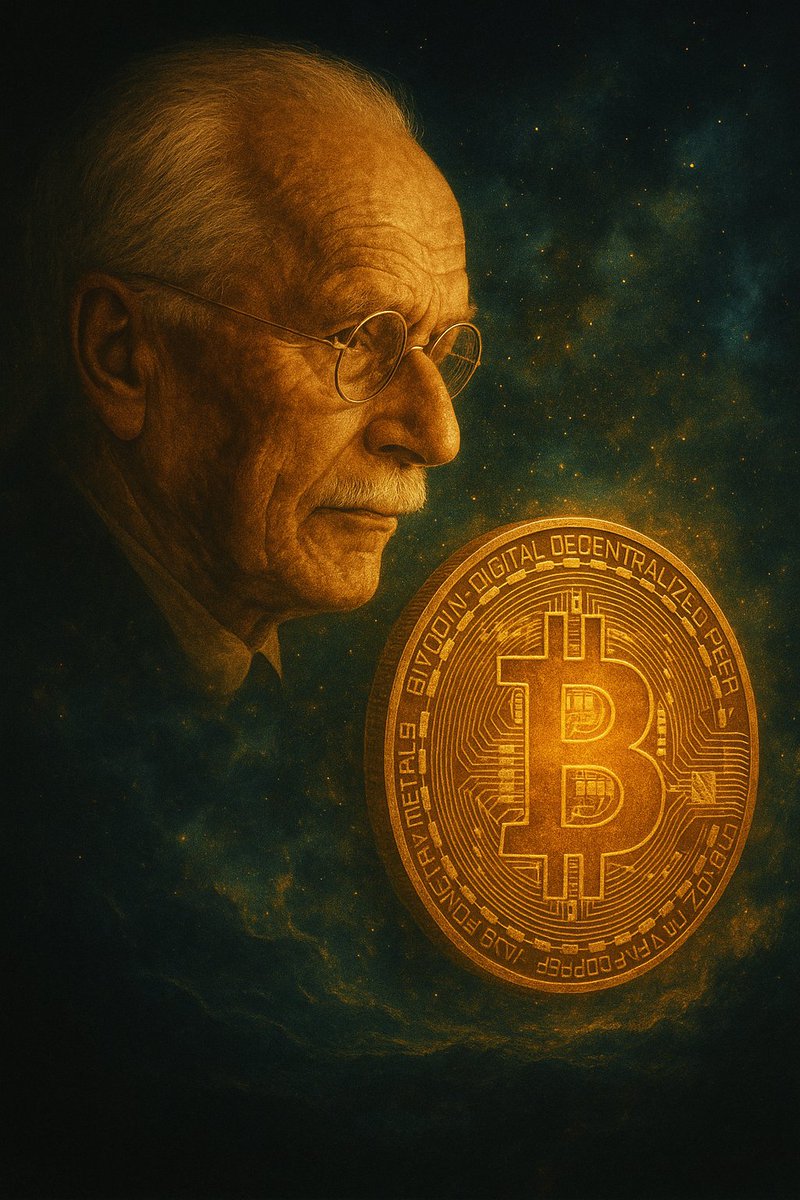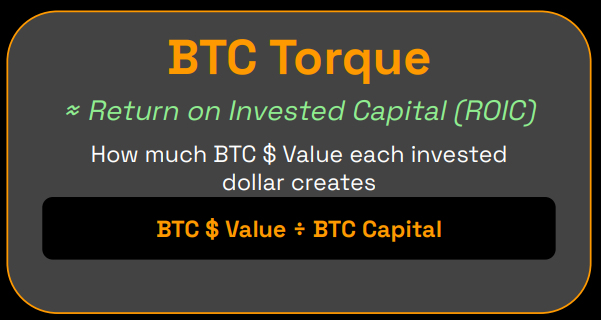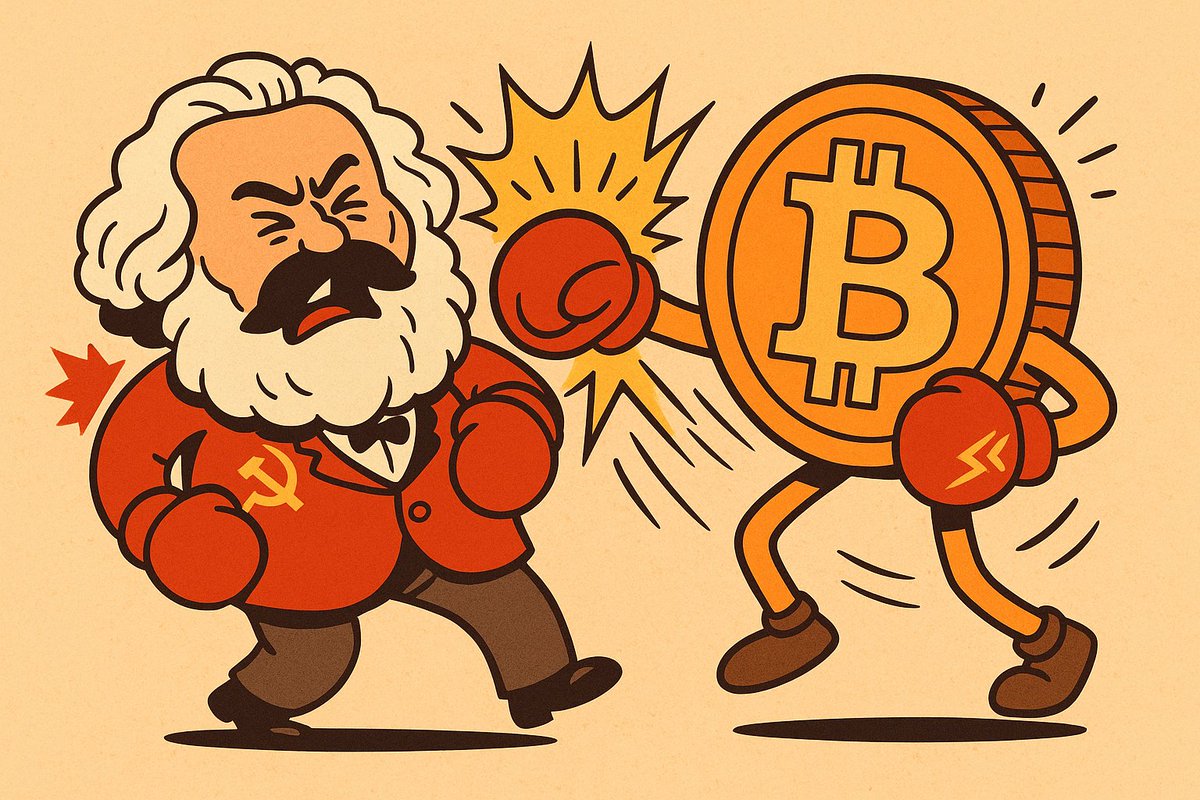🧵How to Calculate the True Return of Bitcoin
If you don't outrun the money printer, your gains are FAKE.
$1,000,000 Bitcoin is cute, but purchasing power is the real test.
Here's how to calculate your real BTC return👇
If you don't outrun the money printer, your gains are FAKE.
$1,000,000 Bitcoin is cute, but purchasing power is the real test.
Here's how to calculate your real BTC return👇

Price going up is nice, purchasing power going up is the point.
Bitcoin at a higher dollar number only matters if your real return beats the rate at which dollars are being diluted.
Nominal returns are what you brag about, real returns are what you can actually eat.
The real return is the nominal return adjusted for inflation, the thing that tells you how much extra stuff you can actually buy.
Bitcoin at a higher dollar number only matters if your real return beats the rate at which dollars are being diluted.
Nominal returns are what you brag about, real returns are what you can actually eat.
The real return is the nominal return adjusted for inflation, the thing that tells you how much extra stuff you can actually buy.
Use a better yardstick than CPI when you think in macro.
Track the expansion of the money you are measuring with.
The broad U.S. money supply, M2, climbed from roughly $4.7T in 2000 to more than $22T by March 2025, which works out to about a 6 to 7 percent compound annual expansion with violent spikes along the way.
If your asset’s CAGR does not clear that monetary tide, your “gain” is a mirage.
Track the expansion of the money you are measuring with.
The broad U.S. money supply, M2, climbed from roughly $4.7T in 2000 to more than $22T by March 2025, which works out to about a 6 to 7 percent compound annual expansion with violent spikes along the way.
If your asset’s CAGR does not clear that monetary tide, your “gain” is a mirage.
Mental model that will save you from self-delusion:
Real BTC CAGR ≈ BTC CAGR minus the monetary expansion rate.
If Bitcoin compounds at 15 percent while the dollar pool compounds at 7 percent, your real gain is only about 7 to 8 percent, not 15.
That is the Fisher intuition applied to money supply growth, not just CPI.
Real BTC CAGR ≈ BTC CAGR minus the monetary expansion rate.
If Bitcoin compounds at 15 percent while the dollar pool compounds at 7 percent, your real gain is only about 7 to 8 percent, not 15.
That is the Fisher intuition applied to money supply growth, not just CPI.
Quick math checks to ground the hype in reality:
“$200,000 BTC by 2028” from a $100,000 starting point is ~14.9 percent CAGR.
If M2 runs 6 to 8 percent, your real CAGR is roughly 7 to 9 percent.
Great, but not the fantasy you feel when you see five zeros.
“$1,000,000 BTC in 10 years” sounds legendary.
Deflate that million by steady 6 to 8 percent broad-money growth for a decade and it buys what about $558,000 to $463,000 buys today.
The commas do not carry the same weight once you account for dilution of the unit.
“$200,000 BTC by 2028” from a $100,000 starting point is ~14.9 percent CAGR.
If M2 runs 6 to 8 percent, your real CAGR is roughly 7 to 9 percent.
Great, but not the fantasy you feel when you see five zeros.
“$1,000,000 BTC in 10 years” sounds legendary.
Deflate that million by steady 6 to 8 percent broad-money growth for a decade and it buys what about $558,000 to $463,000 buys today.
The commas do not carry the same weight once you account for dilution of the unit.
Target setting for sober adults:
Your hurdle rate is not “beat the S&P,” your hurdle is outrun monetary expansion by a wide margin, then outrun your personal tax drag.
Nominal prints are marketing, real returns are survival.
Measure progress in things that matter, purchasing power baskets, energy, hours of high-skill labor, acreage, high-quality calories, not just dollars per coin.
Your hurdle rate is not “beat the S&P,” your hurdle is outrun monetary expansion by a wide margin, then outrun your personal tax drag.
Nominal prints are marketing, real returns are survival.
Measure progress in things that matter, purchasing power baskets, energy, hours of high-skill labor, acreage, high-quality calories, not just dollars per coin.
Why this matters for maxis who plan to hold through $200,000 and beyond: the entire point of Bitcoin is to escape the treadmill that fiat forces you to run.
If your unit of account is leaking at 6 to 8 percent on a long horizon, then a nominal price target is only half a sentence.
The other half is, “did I increase my share of scarce goods and valuable time.”
If the answer is no, the zeros were just confetti.
If your unit of account is leaking at 6 to 8 percent on a long horizon, then a nominal price target is only half a sentence.
The other half is, “did I increase my share of scarce goods and valuable time.”
If the answer is no, the zeros were just confetti.
So yes, celebrate $200,000, celebrate $1,000,000, then immediately ask the adult question.
What is my real CAGR after the dollar supply expansion, and how many units of real life did I gain?
When Bitcoin gets to a million, it will not be the million you imagine today.
The number of digits will rise, the purchasing power only rises if you truly outrun the tide.
That is the game worth winning.
What is my real CAGR after the dollar supply expansion, and how many units of real life did I gain?
When Bitcoin gets to a million, it will not be the million you imagine today.
The number of digits will rise, the purchasing power only rises if you truly outrun the tide.
That is the game worth winning.

• • •
Missing some Tweet in this thread? You can try to
force a refresh












